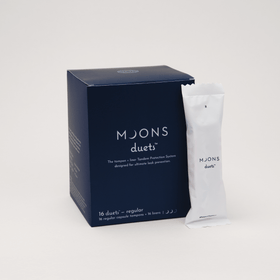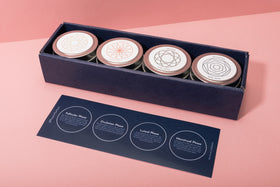Using Herbs to Support Transition into Spring
By Emily Waterfield-Buttner, INHC @golden.wellness
Springtime can be known as a time when life begins again. The trees start budding, flowers start blooming and the whole world awakens again after the slumber of winter. Within our own cycles, our follicular phases (the time between when our periods end and ovulation begins) is synonymous with springtime, as we reenter the world after our bleeds, and with it often comes an energy of creativity and a feeling of "blossoming again" just like what we are seeing outside at this very moment.
With spring can come the dreaded allergy season as well. Seasonal transitions can be hard for our bodies, but there are little allies all around us that will help ease these transitions. The preparation of herbs has become a staple in my weekly routine, as their properties are extremely helpful particularly in these early spring days. Below are a few of my favorite go-to spring herbs, along with their benefits:
Nettle: extremely nutritive, nettle also acts as a gentle anti-histamine, helping to relieve springtime allergies. Nettle is also very nutrient dense, and is a potent source of plant iron, calcium, vitamin A, and chlorophyll. For your cycle, nettle is best consumed at the end of your bleed, and into the follicular phase to help replenish and build the blood back up. Nettle can be enjoyed as a tea, and as an infusion, for a more medicinal strength brew.
Dandelion Root + Leaves: Springtime is a natural time of shedding and detoxing. I love to provide extra support to the liver during this season, and dandelion is perfect for that (note the abundance of dandelion around once we move into the springtime). Making a tea out of roasted dandelion roots nourishes the liver, and acts as a wonderful alternative to coffee. It is also perfect after a meal mixed with ginger and chamomile as a digestive tea. You can sauté the fresh leaves with a little grass-fed butter, and a spoonful of raw honey to help nourish the liver and support detoxification. Dandelion root is wonderfully nourishing around your ovulatory phase, and into the luteal phase as well to help relieve PMS symptoms caused by excess estrogen.
Mint: Mint starts growing wild right around this time of year and continues well into the summer months. This basic, yet powerful herb helps to support digestion and promotes healthy elimination, and cools the system of any excess heat. You can enjoy mint as a tea, but it is also wonderful to add in to meals to brighten and freshen them up as our palettes naturally begin to crave lighter, brighter foods again.
Raw honey: Yes, not an herb by any means, but raw honey is extremely helpful in supporting the seasonal shift and combating the pollen overload. Aim for local, raw honey. Add a little to teas, have on toast with a bit of butter, or spoon a dollop on some raw cheese. (Or, just have by the spoonful, my favorite way.)
While it is easy to peruse the grocery store shelves for a quick fix to ease our ailments, sometimes the answer lies in getting back to our roots and returning to nature, as she always provides us with what we need, right when we need it.





